St. Louis City are a new club taking part in their first-ever league campaign in the MLS. The newly assembled squad have enjoyed a strong start to the season, with 13 wins in 23 league games, leaving them top of the Western Conference.
With 13 goals scored from set plays, they have netted more goals than any other side in the league so far. Their most recent league triumph against Inter Miami has given them the attention they deserve, especially with all three goals in their 3-0 victory coming through set pieces.
Ex-Hertha Berlin midfielder Eduard Löwen’s ball-striking ability has been critical to their success from dead balls. Their other designated player spots have been taken by Roman Bürki arriving from Borussia Dortmund, and Klauss from 1899 Hoffenheim.
In this tactical analysis, we will look into the tactics behind St. Louis City’s corner routines, with an in-depth analysis of how their strategy of trapping defenders inside the six-yard box has been successful. This set-piece analysis will examine why this method has been effective and how St. Louis City could further develop their routines to remain unpredictable.
Preferred Routine
The primary method which has enabled St Louis City to be so effective from corners has been their ability to create open spaces on the six-yard line. They have used a variety of screens to block defenders from stepping out of the six-yard box, which has allowed a runner from deep to arrive in the six-yard box and attack the ball with pace.
In the image below, it is clear to see St. Louis City using two screens at the near side of the box. The two pink lines show how St. Louis can box defenders into their six-yard box, creating free space on the near side of the six-yard box.
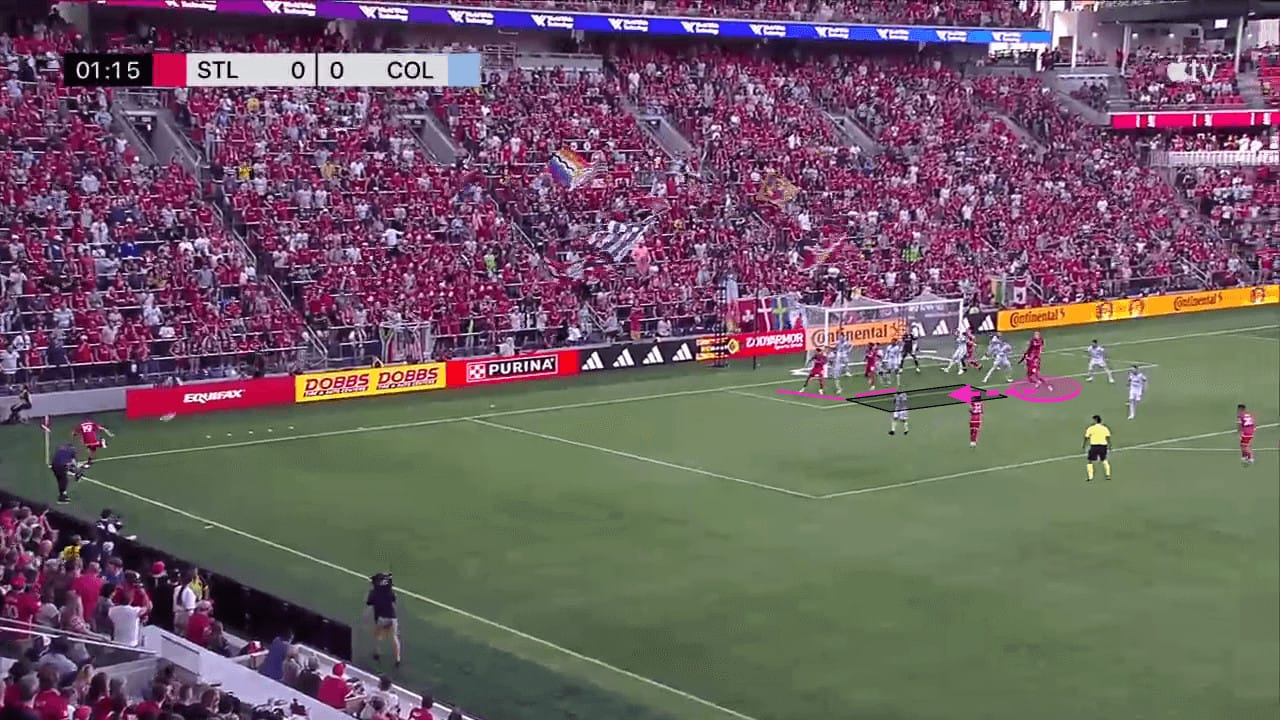
In the close-up, we can see the players providing screens are clearly instructed to do so, with them turning their back to the ball. Turning around to face the defender increases the effectiveness of the screen whilst also reducing the chance the player has of making the first contact with the ball.
With so many players sacrificing themselves, the space made available around the six-yard box increases massively whilst the number of active defenders is reduced. This means each attacker, even if marked by a defender, has more space to roam in, where they have an easier task of creating separation from their marker and arriving in the six-yard box unmarked.
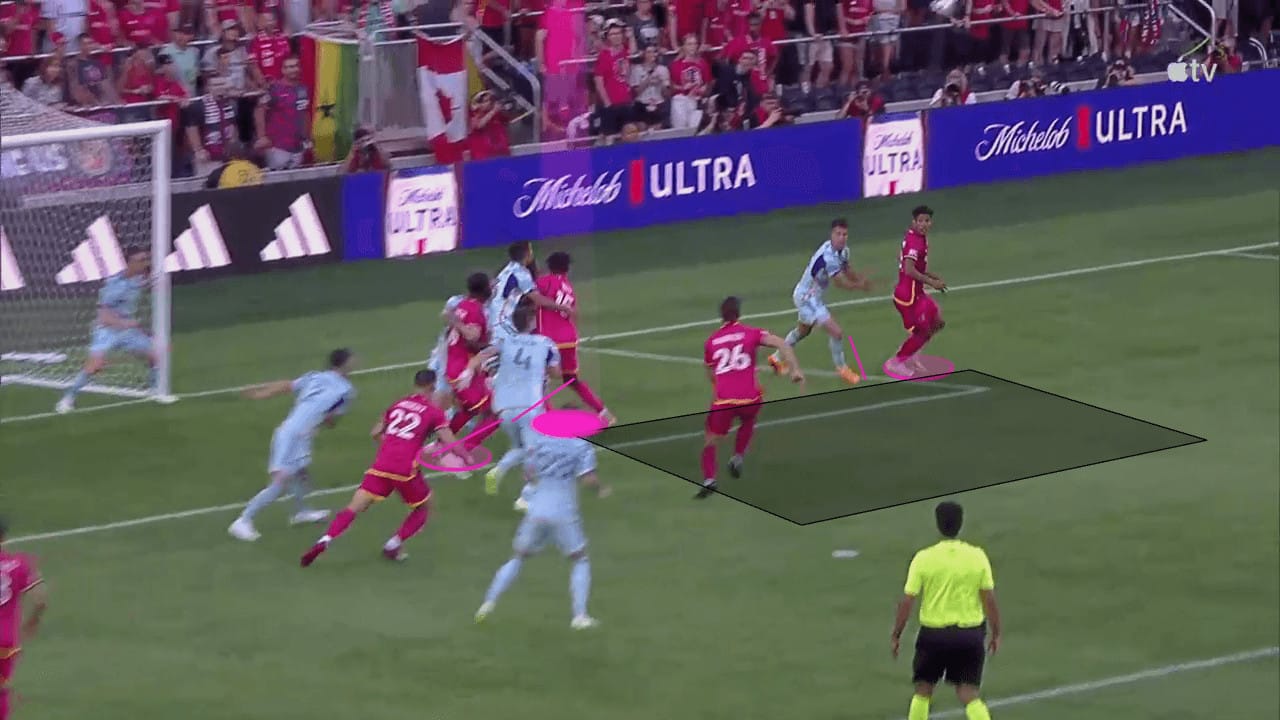
In some instances, and it should be utilised more often as it’s proven effective, St. Louis have used additional screens in deeper areas to increase the chances of making the first contact from corners. In the earlier examples, the newcomers used a variety of screens to prevent the zonal markers from being able to step out to clear the ball.
While this is a positive sign, the attackers in deep areas were still left with 1v1’s, which, although favoured the attackers, didn’t provide them with the optimal conditions.
In the example below, the screen from a deeper area provides one of the attackers with a free run toward the six-yard box. While the risk may be that every other player has sacrificed himself for the corner kick, and has near enough no chance to get to the ball, the one target player, who can be seen attacking the black area, has an increased chance of making the first contact.
The clear run-up and arrival into an unmarked area mean that the target player has a very high chance of getting to the ball first, whether through attacking the ball unmarked or winning the aerial duel due to the sprinting run-up. The only thing left to chance in this routine is whether the cross will be accurate.
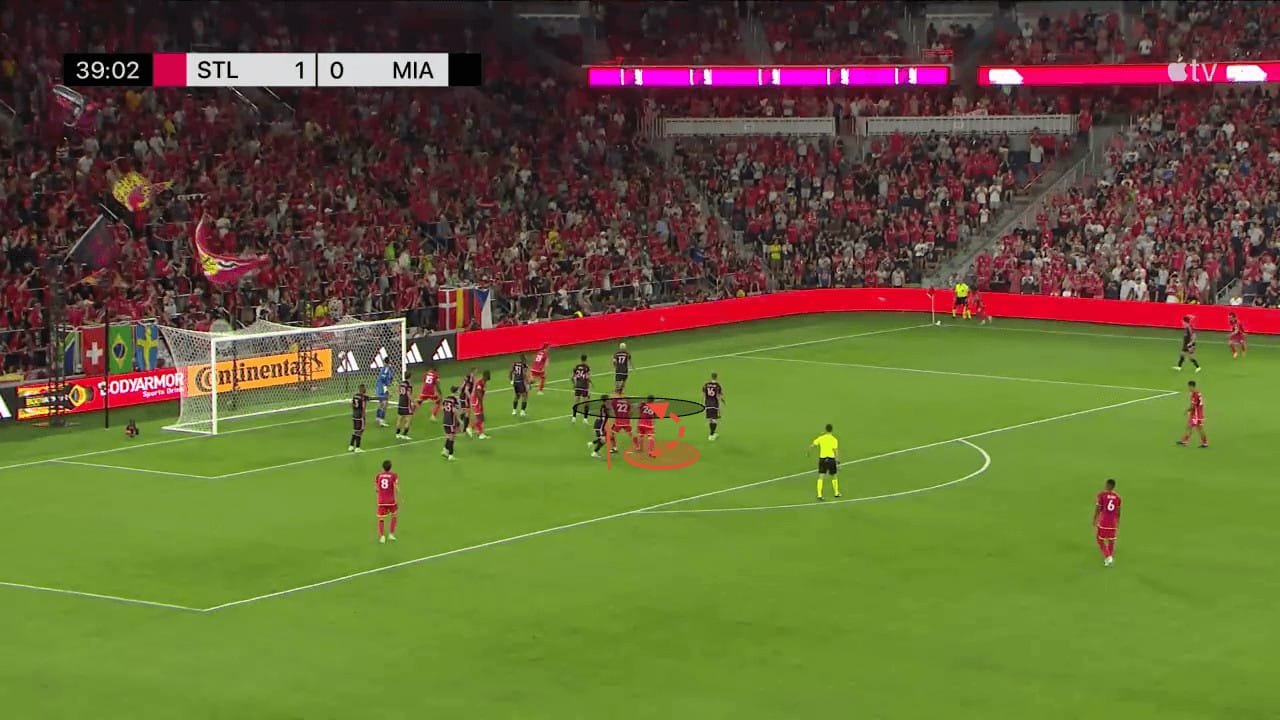
Below, we can see the chance creation method from a clearer angle, with three attackers forcing the defending side to be trapped in their six-yard box. This again leaves the attacking team with a 3v3 in the deeper area, with each attacker being isolated in a 1v1. However, another possibility St. Louis has is to arrive in the target area through a backward movement from a player inside the six-yard box.
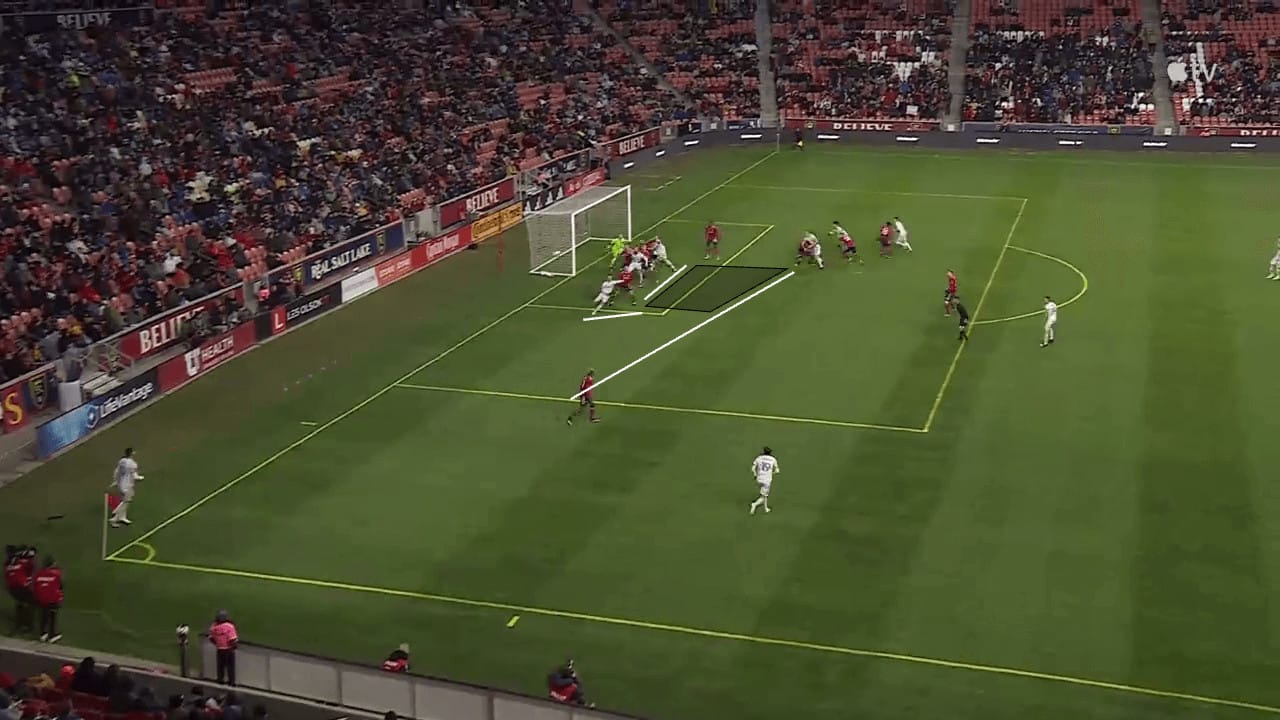
The player moving away from the goal can remain ball side, giving him the advantage by simultaneously shielding the defender away from the goal whilst also having the freedom to move towards the ball. The attacker can redirect the ball toward the goal from within six yards through the backwards separation.
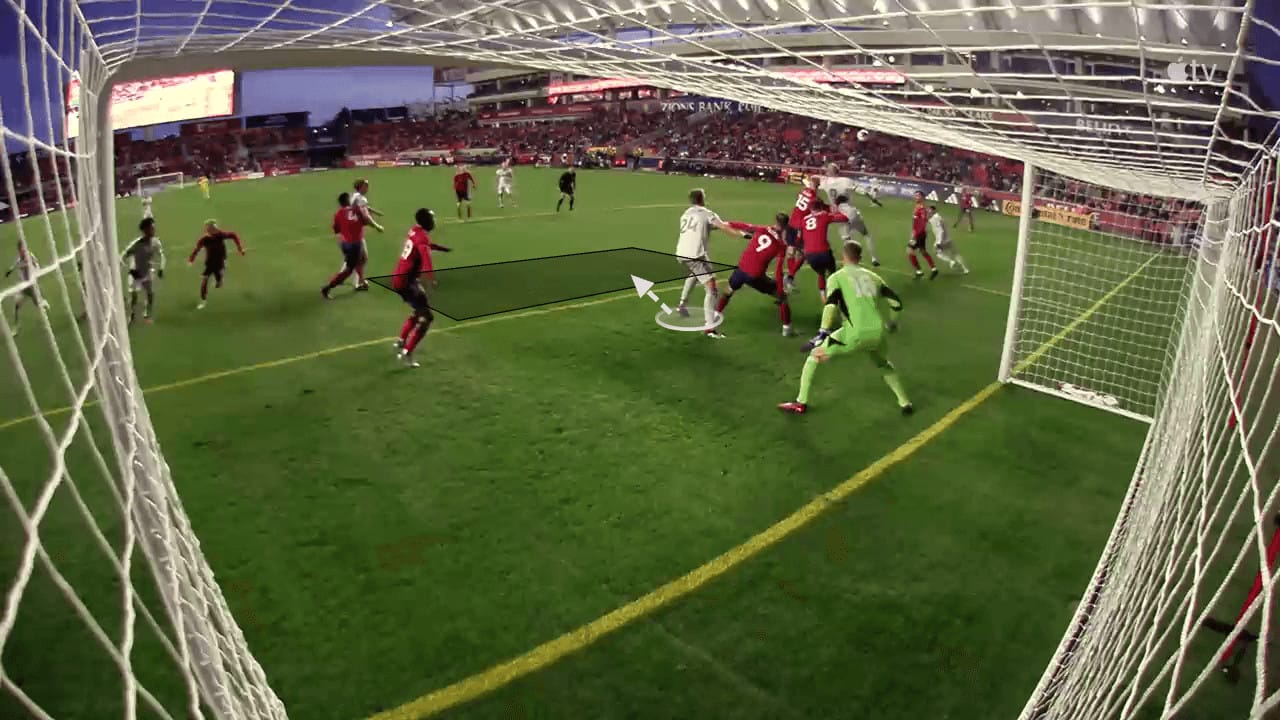
With the routine explained above, targeting the near side of the six-yard box, the risk is that a defender can intercept the cross early by stepping up. While the usual task of the attacker on the near side of the six-yard box is to perform a screen, having a player positioned in that area allows St. Louis to have security with their corners, as the cross, which could potentially be under-hit will arrive to a pink shirt first. From the near side, the player can redirect the cross to make sure the ball comes inside the six-yard box, still giving the attackers from deep the chance to attack the ball.

Variations
St.Louis City have also been able to pose a threat from corners because of their ability to alter their attacks and routines from corners. There hasn’t been an enormous amount of variety, which has made their main method of corners easier to defend against. However, the variations which have been used have proved to be effective.
One way in which this has been done has been through the use of a train, where each attacking player in the unit is in close proximity. Each attacker whose role is to attack the ball from deep positions themselves directly behind the next, where the close positioning prevents man markers from being able to get tight to the attackers.

The players are left in a difficult situation when the attacking unit has each individual stranded, left alone in a 1v1 situation. One way in which the individual attackers have been able to create the separation for themselves has been through the use of quick movement through body feints. In the image below, we can see the attacker reorient his body to be facing the back post, which forces his marker to step backwards.
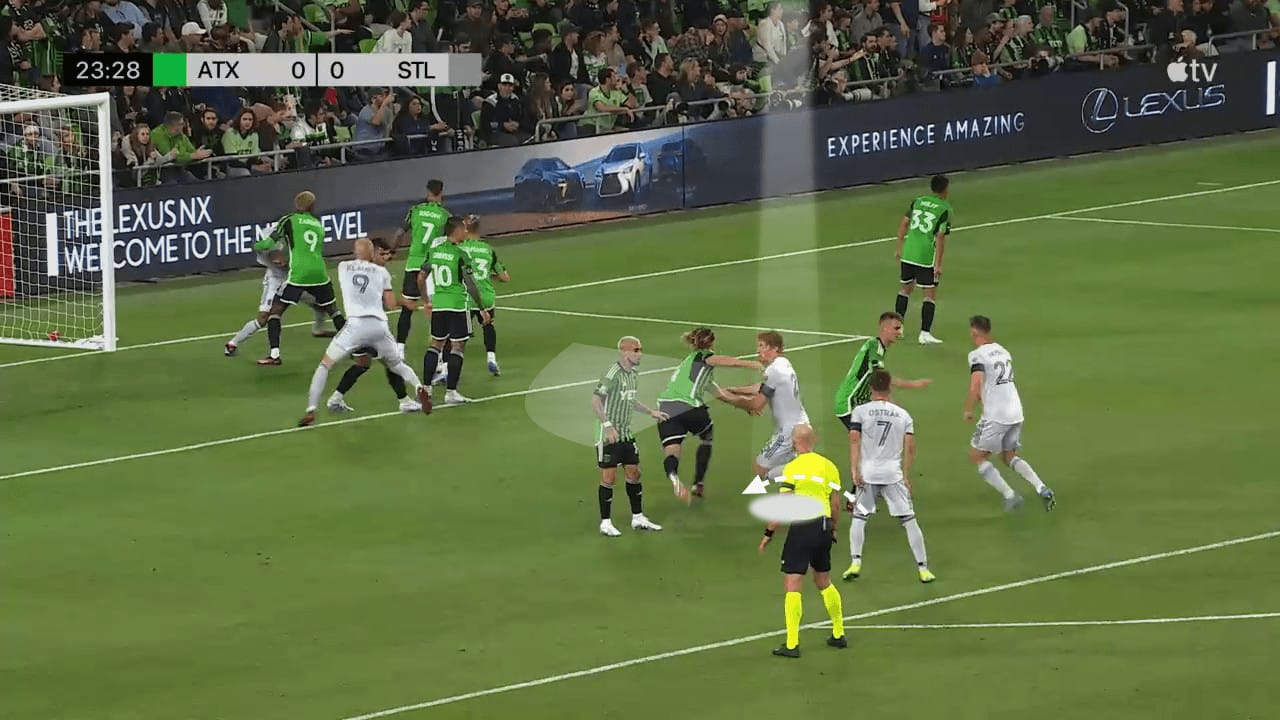
While this step is made, the attacker then quickly reverses his body to face the near post again, which he can then attack with pace. Through smart body positioning and movements, attackers in isolated 1v1 situations can create space for themselves and force defenders to move where they want.
This is a part of the game which many attackers often don’t attempt, with attacking runs often being too straight and predictable, although there is clear evidence that altering the run-up can be highly effective at forcing defenders to move away from desired areas, by making them think that the attacker is targeting a different part of the box, e.g. the back post.
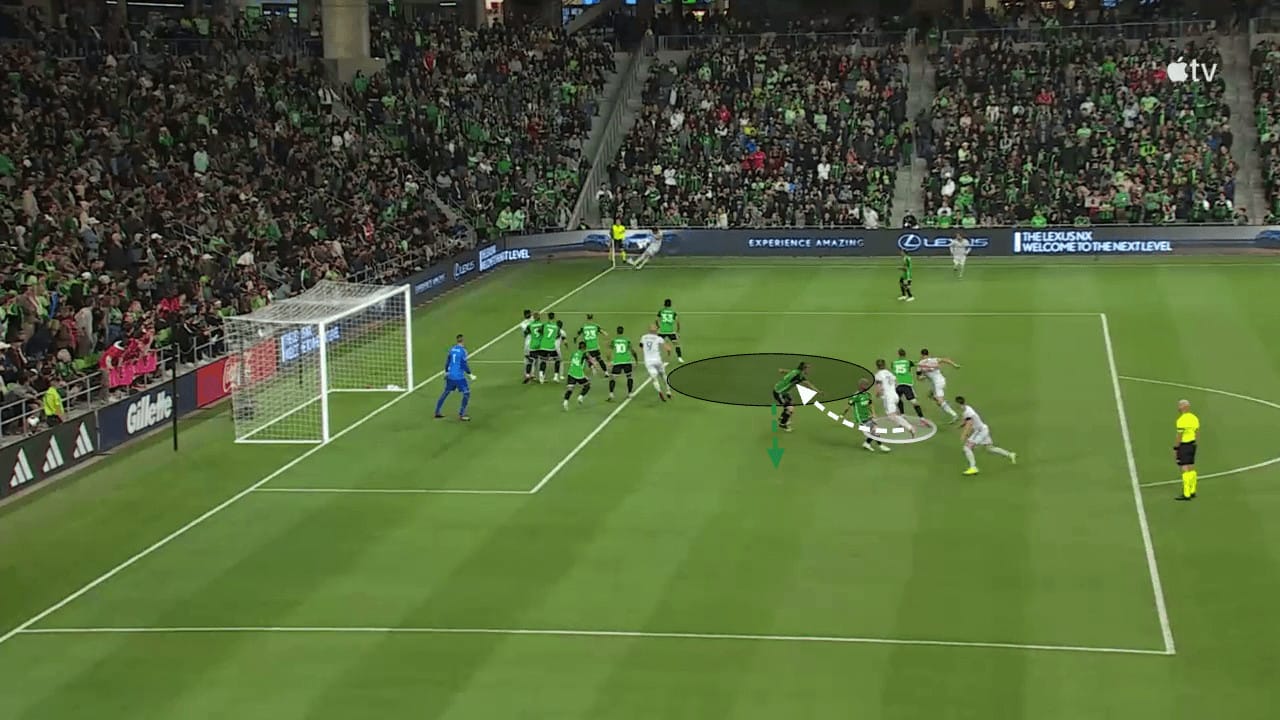
The final alteration to St. Louis City’s preferred corner method has been through their decoy movements, to heavily overload the six-yard box’s near side to isolate the six-yard box’s back half. With their runs towards the near side of the box being predictable at times, teams have started to overload the near side of the six-yard box heavily.
St. Louis City have used this to their advantage by making decoy runs toward the near side of the six-yard box to lure more players toward that area. We can see in the example below attacking runs are made towards the front side of the penalty area while one attacker hangs around the back side of the box. There is also a screen on the goalkeeper to block him from stepping out to claim the cross intended for the back post.
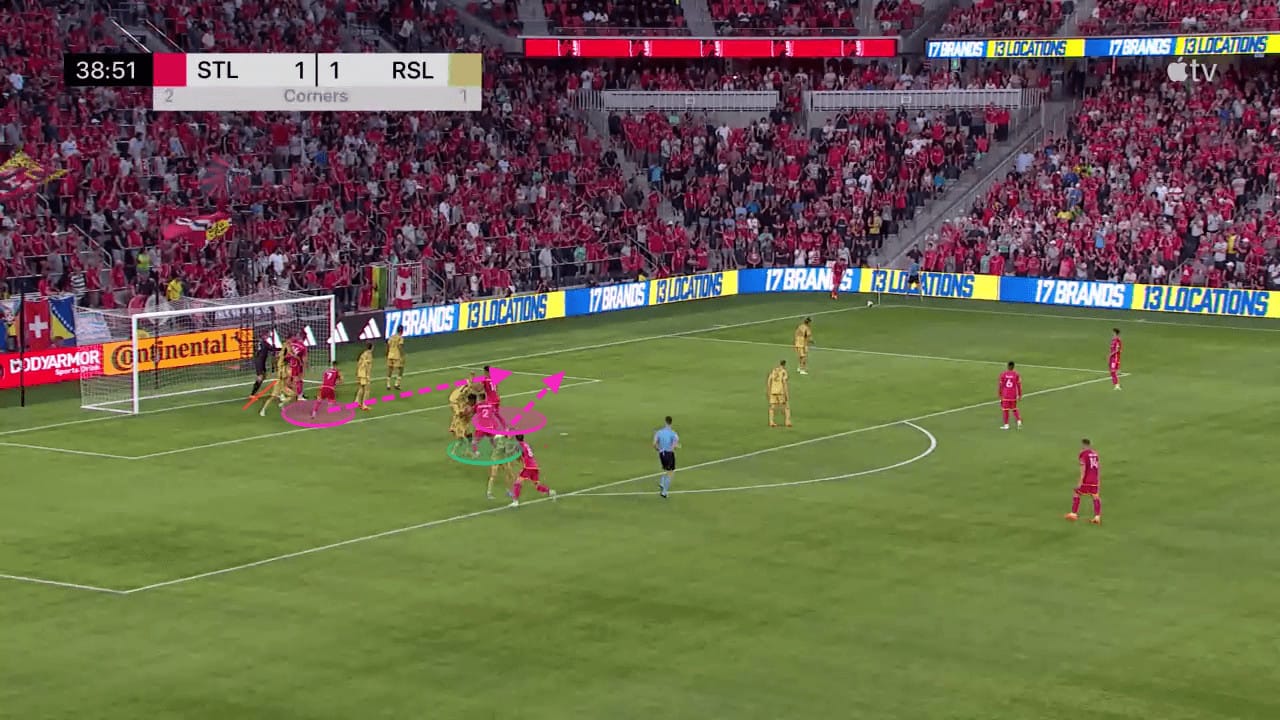
With six defenders protecting the near side of the six-yard box, this leaves a 1v1 situation in the back half of the six-yard box. With the vast amount of space created, the individual attacker has lots of room to create the separation needed to win the aerial duel.
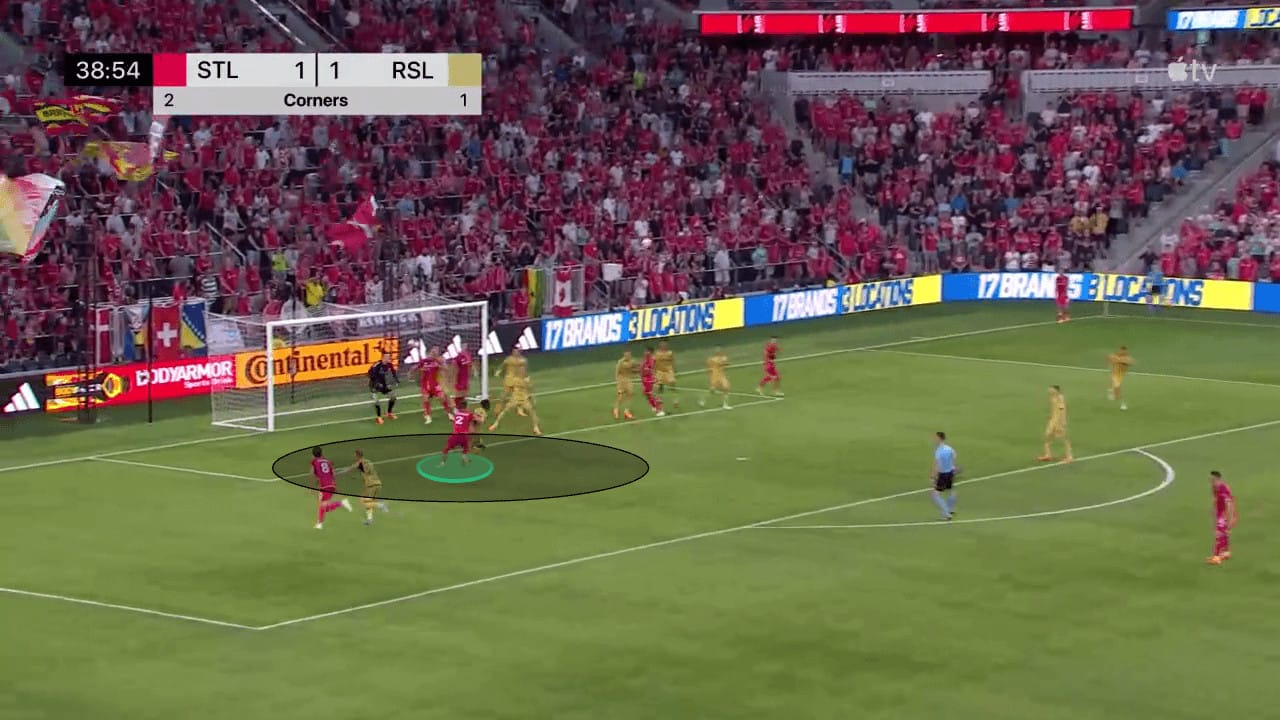
Room for Improvement
A problem that I have found St. Louis City have consistently faced is that their corners have become more predictable for teams to defend against. Although they have used the variations mentioned above, most of their corners focus on the near side of the six-yard box, with teams defending against through heavy zonal marking.
To be an efficient corner-taking side, a team should be able to use a variety of methods in order to remain unpredictable to avoid coming up against defences where teams overcompensate certain areas of the six-yard box that they know will be targeted. The easiest way for a coach to prepare his team for a defending side that overcompensates at the near side of the six-yard box is by developing a routine that targets the back post.
Having two routines, which can be easily used and interchanged, will stretch the defensive block making either method easier to execute. Or, if a defending team only focuses on one part of their six-yard box, St. Louis City will have an easy path to the other part of the box. St. Louis City will be able to react to the defensive structure and make their decisions from there.
The issue is that St. Louis City have been unable to react to the defensive setups, making them too easy to defend against when teams have adequately prepared against their preferred routine. In the image below, we can see a spare zonal defender who is not distracted and is free to clear the ball when it eventually arrives to him.
We can see that the deep attackers have a clear 3v2, meaning that two attackers could sacrifice (through screens or decoy runs) themselves for one player to remain unmarked around the penalty spot. There is also a large part of the back of the undefended six-yard box. Whilst these two glaring gaps in the defensive structure exist, St. Louis City have too much tunnel vision in their approach, where they stubbornly decide to cross the ball to the near side of the six-yard box, which the spare zonal defender can easily attack.
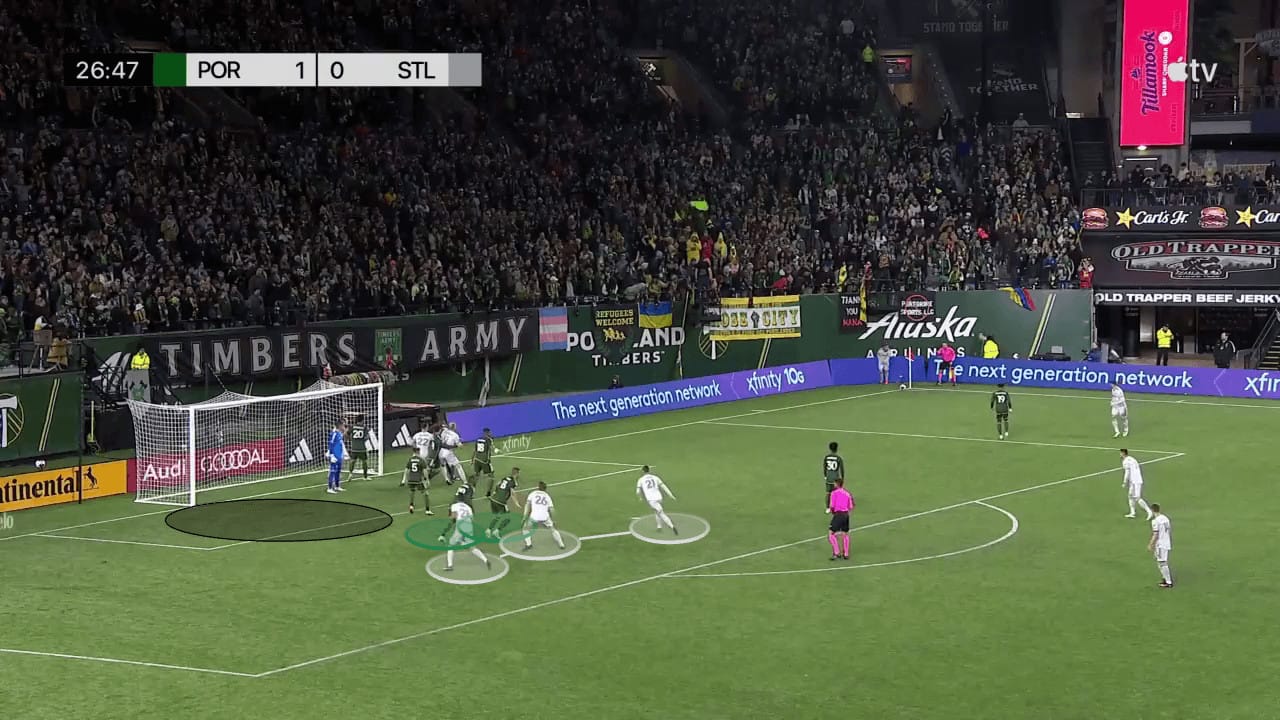
Summary
This tactical analysis has demonstrated the reasons as to why St. Louis City have been such a deadly side from corners this season in the MLS. Their ability to create space in and around the six-yard box has been excellent, with the close position meaning that almost any time the first contact is made, a goal would likely be scored.
However, there is room for improvement, as their tunnel vision approach has led them down dead ends often. The method to target the near side of the six-yard box has been so effective that they want to constantly utilise it, but any strong team has to have multiple ways in which they can cause danger in order to avoid becoming unpredictable. Teams have been able to crowd that part of the box with defenders, which has reduced the efficiency of their routine.





Comments